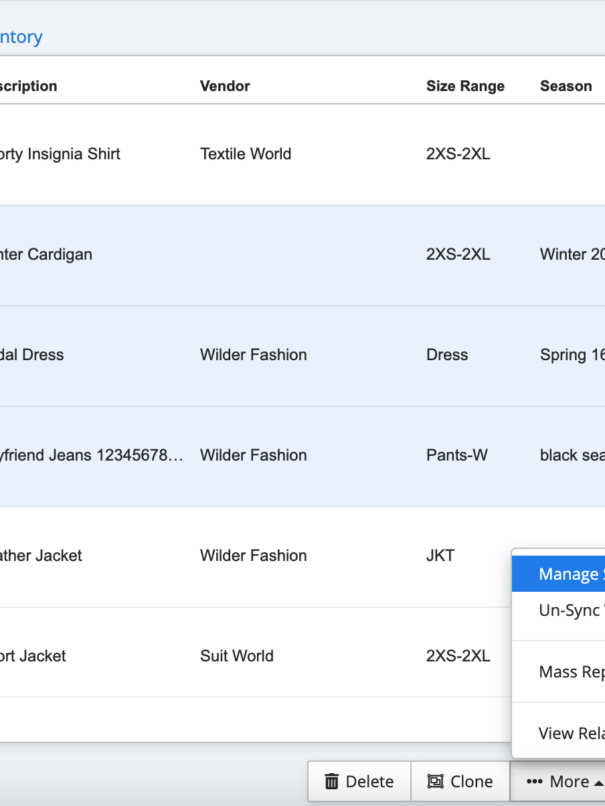The fashion industry, with its intricate designs, seasonal trends, and global reach, necessitates a seamless and efficient supply chain. As the demand for real-time tracking and inventory management intensifies, the industry has turned to technological solutions. Among these, barcodes and QR codes, integral components of code technology, stand out as pivotal tools.
These technologies, while seemingly simple, have revolutionized the way fashion retailers operate, ensuring accuracy, enhancing visibility, and fostering a more engaged relationship with customers, thereby strengthening their online presence. As a matter of fact, the number of American smartphone users who scan QR codes is projected to rise from 83.4 million in 2022 to 99.5 million by 2025.
This article delves into the transformative impact of barcodes and QR code management in the fashion supply chain, emphasizing their significance in today’s retail landscape and the importance of having complete control over product packaging.
Barcode and QR Code Management Fundamentals
Barcodes, a series of vertical lines of varying widths, represent data. They are interpreted by a code reader, which scans a light across the lines. Each barcode uniquely identifies a product, allowing for quick and accurate data retrieval through a simple scan. Conversely, QR (quick response) codes, a popular code type, are two-dimensional codes with the capacity to store more data than a traditional barcode.
This includes links to websites, texts, and more. They are typically scanned using smartphones or dedicated code readers, underscoring their versatility in today’s digital age.
In the fashion industry, barcodes and QR codes are seamlessly integrated into product labels and tags, enhancing the digital experience. This integration facilitates the following:
- Efficient checkout: Cashiers can quickly scan the barcode or QR code at the point of sale, reducing the time spent on manual data entry and ensuring the correct file formats are used.
- Product information retrieval: A simple scan can provide detailed information about the product, such as its origin, material, care instructions, and more, making it a valuable marketing tool.
- Digital engagement: QR codes can link to digital content, allowing brands to interact with consumers by offering styling tips, videos, or even augmented reality experiences and tracking engagement. This is where a QR code generator plays a pivotal role, creating unique QR codes that can be incorporated into various marketing plans.
Enhancing Fashion Supply Chain Efficiency with ApparelMagic
The integration of barcodes and QR codes in the fashion supply chain has significantly reduced the need for manual data input and bulk uploads. This automation ensures that products are processed faster, whether they’re being received in a warehouse, transferred between locations, or sold in a retail setting.
With ApparelMagic Mobile, business owners can scan barcodes using their mobile device’s built-in camera, instantly bringing up style details, inventory, and more. This transforms mobile phones into an on-the-go order-taking machine, making trade shows and buyer appointments more efficient.
ApparelMagic Mobile further enhances this process by providing access to products, customers, and orders from anywhere in the world, even without Wi-Fi or cell service. A quick data download keeps the catalog and inventory current.
Once back online, orders can be uploaded to the cloud, allowing teams to view and edit orders directly from their browsers. This ensures that even in areas with weak cell signals or no Wi-Fi, businesses can use all the features as usual, ensuring that the fashion supply chain remains uninterrupted and efficient.
Real-time inventory management enables fashion retailers to maintain up-to-date records of their stock levels. This real-time data is crucial for:
- Timely stock replenishment: Retailers can quickly identify when stock levels are low and reorder products as needed.
- Avoiding overstocking or stockouts: With accurate inventory data, retailers can make informed decisions about how much stock to hold, reducing the costs associated with holding excess inventory or missing out on sales due to stockouts.
Eliminating Error
Human errors, such as miscounting stock or inputting incorrect product information, can have costly repercussions in the fashion industry. These mistakes can lead to incorrect orders, returns, and dissatisfied customers.
QR code supply chain management enables businesses to significantly minimize these errors, ensuring accurate order processing and enhancing customer satisfaction.

Optimizing Warehouse Operations in the Fashion Industry With QR Code Management
Warehouses, the backbone of the fashion industry, serve as the central hub for products before they reach retailers or consumers. With the integration of barcodes and QR codes, warehouse operations can be optimized.
Tracking Product Movement Within Warehouses
These tools offer a streamlined approach to tracking product movement within warehouses. Every item, whether entering or exiting the warehouse, can be swiftly scanned, ensuring real-time and accurate tracking of its movement.
Ensuring Efficient Storage and Easy Retrieval of Fashion Items
Beyond just tracking, these codes play a crucial role in storage and retrieval processes. Systematic storage, enabled with the help of QR code management, ensures that warehouse personnel can quickly determine the optimal location for each fashion item, making retrieval processes faster and more efficient.
Reducing Misplacements and Ensuring Products Are Stored in Designated Locations With QR Code Management
One of the significant challenges warehouses face is the misplacement of items, which can lead to stockouts, potential delays in deliveries, and a subsequent increase in operational costs.
With the precise nature of barcodes and QR codes, every product is assigned a designated location, drastically reducing misplacements and ensuring that products are always stored where they should be. This holistic approach to warehouse management, powered by code technology, ensures that the fashion supply chain operates at peak efficiency.
Benefits in the Fashion Retail Environment
The fashion retail landscape has been significantly transformed with the integration of barcodes and QR codes. These seemingly simple code technologies have reshaped the way retailers interact with customers and manage their operations.
Enhanced Customer Experience
In the contemporary, fast-paced shopping world, customers are constantly seeking speed and efficiency. They no longer have the patience for long checkout queues or cumbersome billing processes.
Here’s where barcodes come into play. By facilitating rapid checkout processes, barcodes have streamlined the billing procedure, ensuring that customers experience a smooth and swift transaction. This not only enhances their overall shopping experience but also boosts their likelihood of returning to the store. Businesses can always give out freebies to those who are using their implemented QR code management systems.
Real-Time Product Availability Information
The modern shopper is well-informed and often comes to the store with a plethora of product-related queries. In such scenarios, sales representatives need to be equipped with real-time information to address these inquiries effectively. Thanks to barcode scanners and phones with QR code reading capabilities, sales staff can now provide on-the-spot details about product availability, sizes, colors, and more.
This immediate access to product information not only enriches the shopping experience for the customer but also empowers the sales representative to offer alternatives or upsell, enhancing the store’s overall sales potential.
Efficient Return and Exchange Processes
The dynamic nature of fashion means that returns and exchanges are common occurrences. Traditionally, these processes were complex and time-consuming, often leading to customer dissatisfaction. However, with the advent of barcodes, this scenario has changed. Barcodes allow for the swift scanning of returned items, enabling real-time inventory updates and the prompt processing of exchanges or refunds.
This efficiency not only reduces the operational workload for the retailer but also instills a sense of trust in the customer. They can be assured that their concerns are addressed promptly, further solidifying their loyalty to the brand.
Choosing the Right Barcode and QR Code System for Fashion Brands
As the fashion industry evolves, so does the need for advanced tracking systems. When choosing a barcode or QR code system, fashion brands should consider:
- Type of barcode: Brands can choose between 1D and 2D barcodes.
- Scanner type: The store’s size and volume will dictate the choice of scanner.
- Connectivity options: Wireless scanners offer more flexibility.
- Durability: Durable scanners are crucial in fast-paced environments.
- Software compatibility: The chosen system should integrate with the brand’s existing software.
Conclusion
The fashion industry’s rapid evolution and global expansion necessitate cutting-edge solutions to maintain efficiency and customer satisfaction.
Barcodes and QR codes, representing the forefront of code technology, have emerged as indispensable tools in this endeavor. Their integration into the fashion supply chain has not only streamlined operations but also enhanced the overall customer experience.
From ensuring swift checkouts to providing real-time product information, these technologies have reshaped the retail landscape. Moreover, their role in optimizing warehouse operations underscores their significance in maintaining a seamless supply chain.
As fashion brands navigate the challenges of the digital age, it’s evident that the use of barcode inventory management and supply chain organization will be paramount. Whether it’s choosing the right code reader, ensuring product packaging is optimized, or leveraging code generators for marketing plans, brands must be proactive in their approach. In doing so, they not only ensure operational efficiency but also strengthen their online presence, fostering a more engaged and loyal customer base.
As the industry continues to evolve, one thing remains clear: the fusion of fashion with advanced code technology is not just a trend but a lasting transformation, and brands that adapt will undoubtedly thrive.







